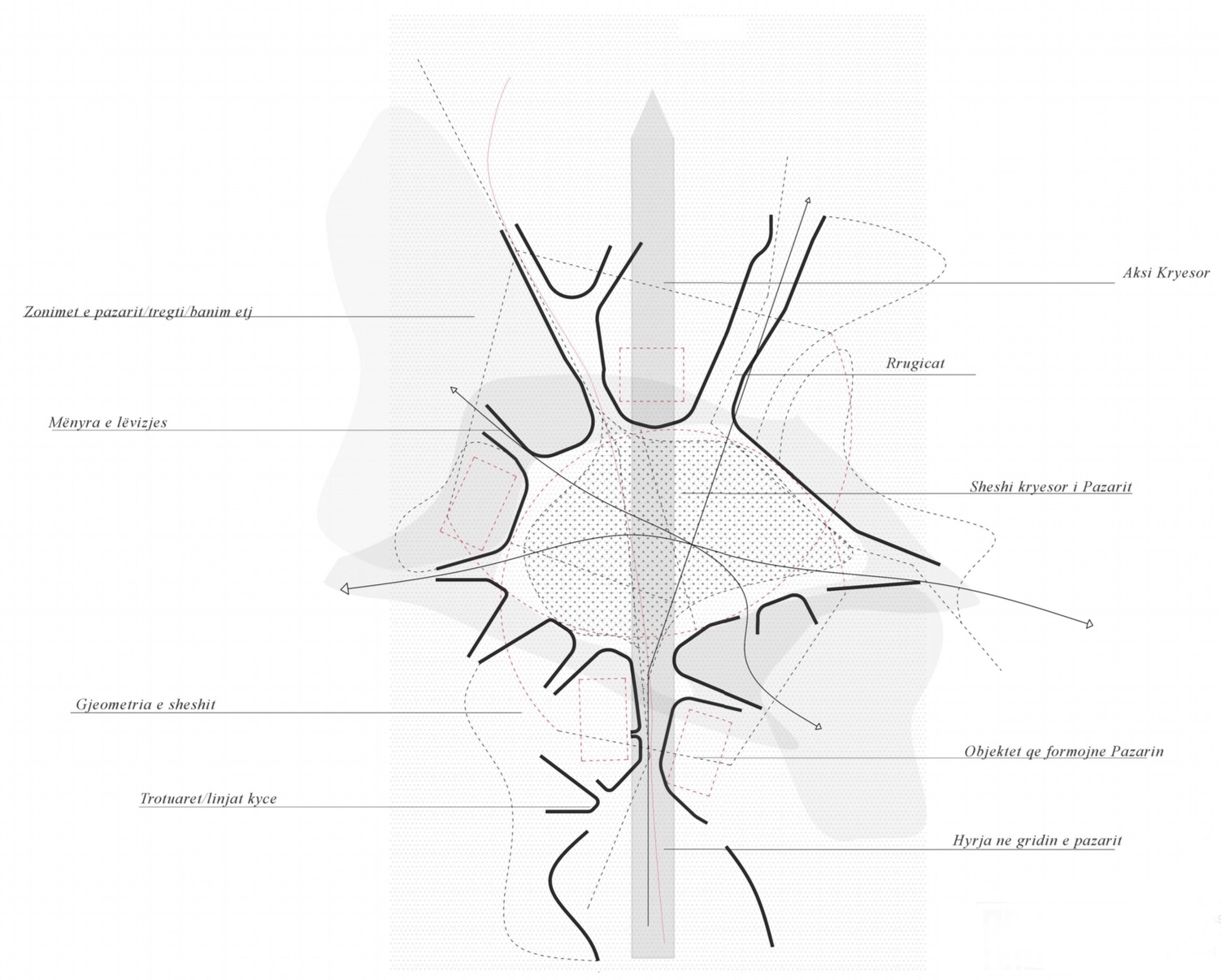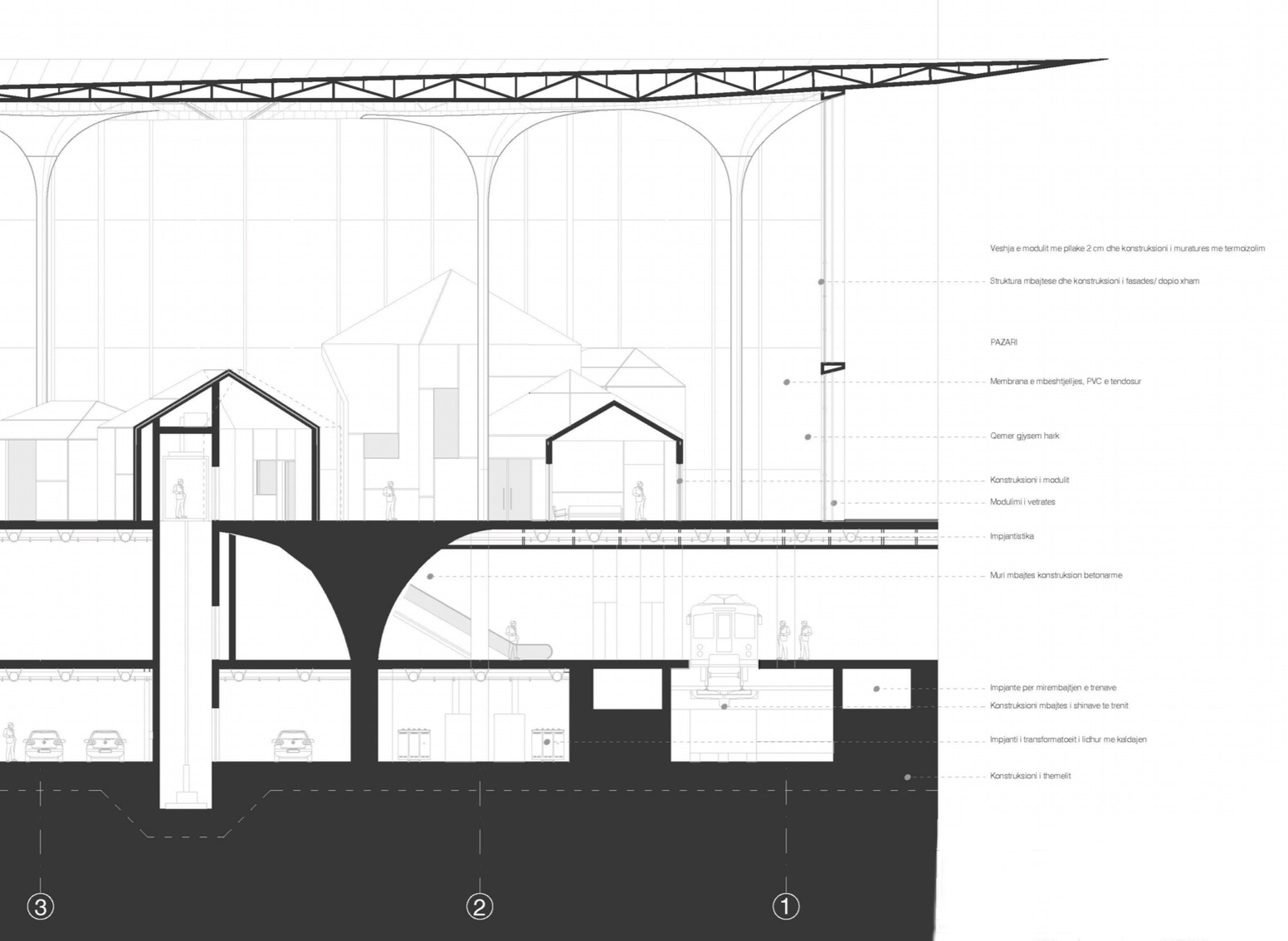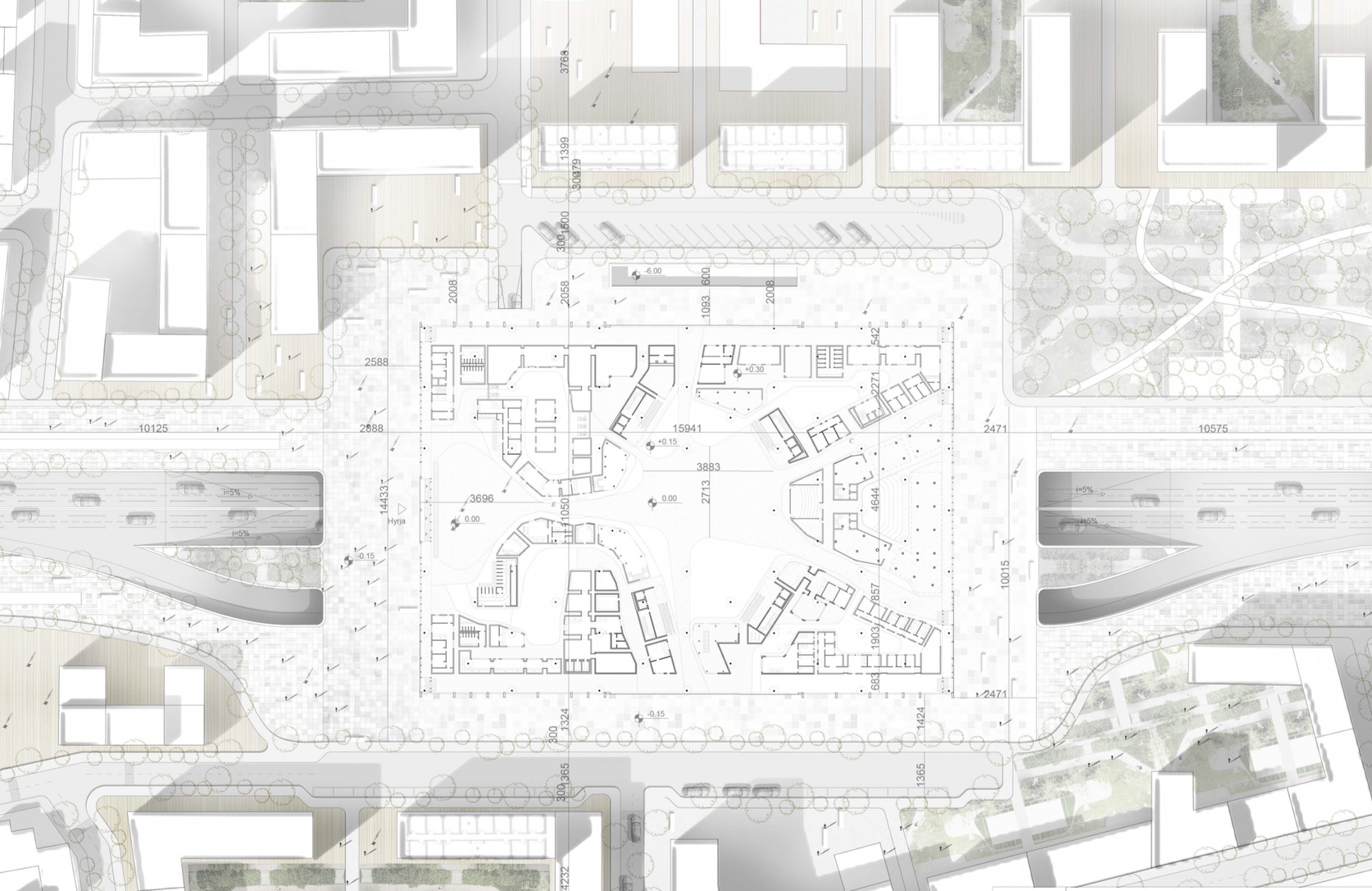City and identity have never been totally associated with one another.Since ancient times, urban space has been a reflection of a collective identity that introduced the natural adaptation of life.By radical changes both in the complexity of the society,the insensitivity of urbanization of space, architecture,as well as changes in culture and tradition,the role of city and identity no longer appears as before.Generic city,which is related to these phenomena over the past 25 years,fits in this project quite well,as it is required to restructure the image of Tirana.But not a new image of it,but returning to the genesis,through an in-depth search on the history of Tirana.Presenting as a city-forming element,the Bazaar is chosen as a frame.

Today, as a result of the development of cities and technology, the train station takes on another form. It turns from a connection point and transit town, to a landmark and identification.Thus,it not only carries the basic functions of this typology,but also functions that create an interaction between people.According to L. Bertolini,he turns from space into joints,thus taking the shape of a mini town within himself.Today's stations,based on deployment,the standards associated with the movement fluxes,the city's character and the station itself,are divided into transit and terminal. These shapes differ from one another,both technically and in terms of the location of the tracks and the city where the station is located, and the functions they carry.A terminal requires a clean movement where it is well distinguished for the passenger,the journey he takes at the moment of entry.There should be a linear scheme whereby he is informed,rested,served,and fulfilled his request regarding the movement.So the terminal consists of 7 large areas:access,related information/services,administrative services,security,technical and maintenance space,activities,rest and departure.

The concept of the bazaar station comes as a result of several successive analyzes: (1) Movement scheme. As set out, both structures are characterized by a linear movement, and with a virtually identical functional division, such as shopping, exit, and then in nature, so does the station, with the waiting area and information, with the main lobby, with passenger services, and departure to the shelter. (2) Atmosphere. The station, in spite of the individualist character, shows in a way an attempt to interact for that time period of passengers, especially after its development, turning into a multifunctional and cultural center. (3) Identity. In the eastern countries, the bazaar developed space around the city, and every trader was identified with the city through it. The same thing happens with the station, as one of the first points of encounter and acquaintance with the city.






